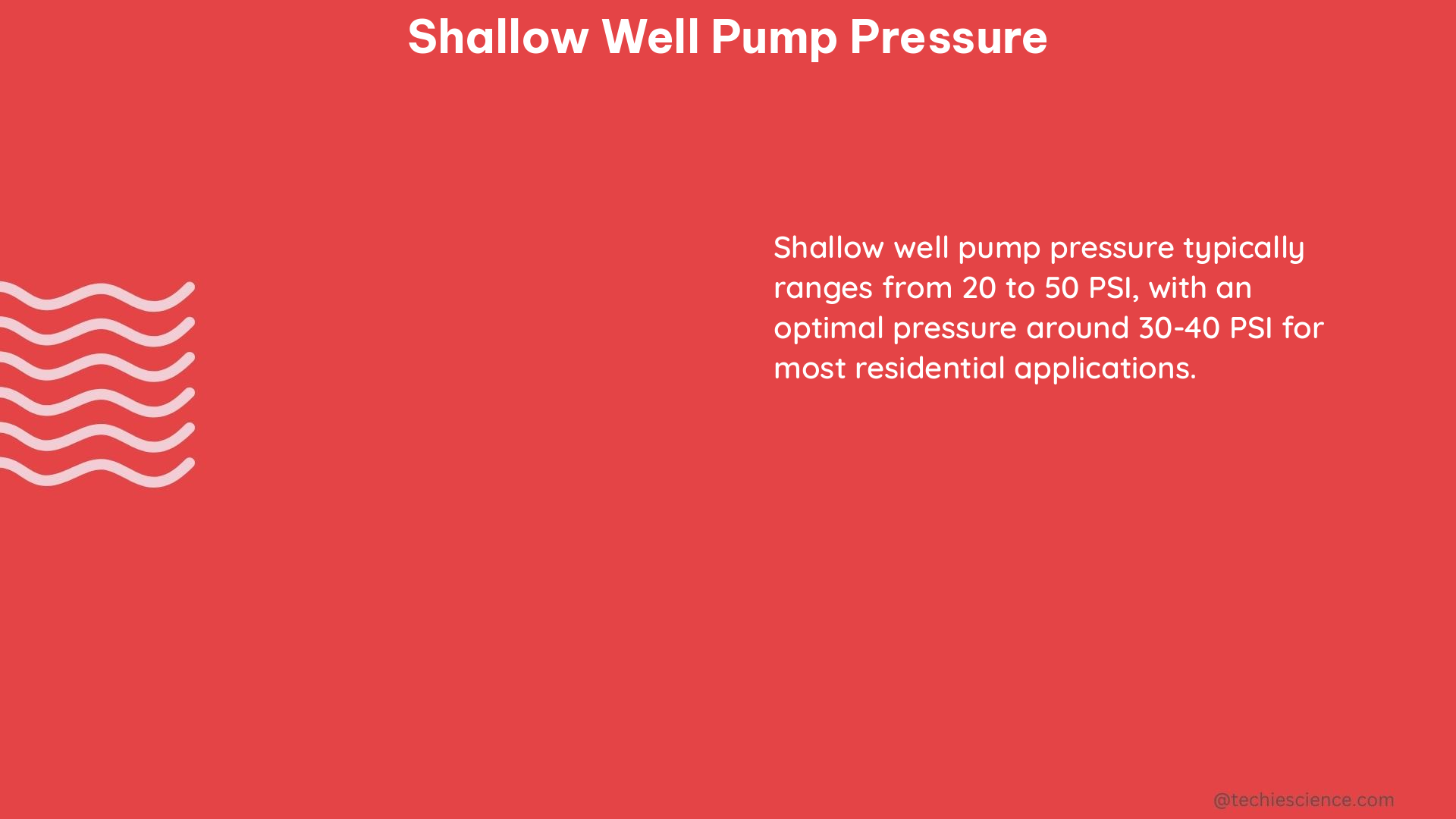Shallow well pumps are a critical component in water supply systems, responsible for lifting water from wells with depths of less than 25 feet. The pressure of these pumps is a crucial factor that determines their performance, flow rate, and the distance the water can be pumped. In this comprehensive guide, we will delve into the intricacies of shallow well pump pressure, providing you with a detailed understanding of the topic.
Understanding Shallow Well Pump Pressure
Shallow well pumps are designed to operate within a specific pressure range, typically between 30 and 50 pounds per square inch (psi). This pressure range is maintained by a pressure switch, which is an essential component of the pump system. The pressure switch turns the pump on when the pressure falls below 30 psi and stops it when the pressure reaches 50 psi.
The pressure of a shallow well pump is influenced by several factors, including the depth of the well, the size and length of the suction and discharge pipes, and the flow rate of the water being pumped. Understanding these factors is crucial when selecting the right pump for a specific application.
Determining the Depth to Water

To select the appropriate shallow well pump, it is essential to know the depth to water in the well. This can be easily determined by using a simple method:
- Attach a small, floatable device to the end of a string.
- Lower the string into the well until the device floats on the water surface.
- Mark the string at ground level and measure the distance to the water surface.
This measurement will provide the depth to water, which is a critical factor in determining the type of pump needed for the application.
Selecting the Right Pump
Based on the depth to water, the following pump types can be selected for shallow well applications:
| Depth to Water | Pump Type |
|---|---|
| 25 feet or less | Shallow well jet pump or convertible jet pump set up for shallow wells |
| 25 to 90 feet | Convertible jet pump set up for deep wells or submersible well pump |
| 25 to 400 feet | Submersible well pump |
It is important to note that the depth to water is not the only factor to consider when selecting a pump. Other factors, such as the flow rate required, the size of the well, and the available power source, should also be taken into account.
Measuring the Flow Rate
To determine the flow rate of a shallow well pump, the stopwatch method can be used. This involves the following steps:
- Completely drain the system.
- Measure the time it takes to fill a container of known volume.
- Calculate the flow rate by dividing the volume of the container by the time taken to fill it.
For example, if it takes 30 seconds to fill a 5-gallon bucket, the flow rate would be 10 gallons per minute (GPM).
Pressure Switch Considerations
The pressure switch is a critical component of a shallow well pump system, as it controls the on/off operation of the pump based on the pressure in the system. It is essential to ensure that the pressure switch is properly calibrated and functioning correctly to maintain the desired pressure range.
Some key considerations for the pressure switch include:
- Pressure switch setting: The pressure switch should be set to start the pump when the pressure falls below 30 psi and stop it when the pressure reaches 50 psi.
- Pressure switch location: The pressure switch should be installed as close to the pump as possible to accurately measure the system pressure.
- Pressure switch maintenance: Regular inspection and maintenance of the pressure switch are crucial to ensure its proper operation.
Troubleshooting Shallow Well Pump Pressure Issues
If you encounter issues with the pressure of your shallow well pump, there are several steps you can take to troubleshoot the problem:
- Check the pressure switch: Ensure that the pressure switch is properly calibrated and functioning correctly.
- Inspect the suction and discharge pipes: Look for any blockages, leaks, or restrictions that may be affecting the pump’s performance.
- Measure the flow rate: Use the stopwatch method to determine the pump’s flow rate and compare it to the manufacturer’s specifications.
- Check the well depth: Verify that the well depth is within the recommended range for the installed pump.
- Consider pump replacement: If the pump is not performing as expected, it may be necessary to replace it with a more suitable model.
By following these steps, you can effectively diagnose and address any issues related to the pressure of your shallow well pump.
Conclusion
Shallow well pump pressure is a critical factor in the performance and efficiency of water supply systems. By understanding the factors that influence pump pressure, selecting the right pump for the application, and properly maintaining the pressure switch, you can ensure reliable and consistent water delivery from your shallow well. This comprehensive guide has provided you with the necessary knowledge and tools to effectively manage and troubleshoot shallow well pump pressure in your water supply system.
References:
- Red Lion Pumps Product Information
- Stopwatch Method for Flow Rate Measurement
- Well X-Trol Sizing Guide

The lambdageeks.com Core SME Team is a group of experienced subject matter experts from diverse scientific and technical fields including Physics, Chemistry, Technology,Electronics & Electrical Engineering, Automotive, Mechanical Engineering. Our team collaborates to create high-quality, well-researched articles on a wide range of science and technology topics for the lambdageeks.com website.
All Our Senior SME are having more than 7 Years of experience in the respective fields . They are either Working Industry Professionals or assocaited With different Universities. Refer Our Authors Page to get to know About our Core SMEs.